It’s still early in the game, but a few sites in downtown Cleveland are being considered by the Haslam family, owners of the Cleveland Browns, for a large, stadium-oriented development zone. The planning process is just getting underway with an eye toward 2029 — the year the team’s lease ends with the city for use of First Energy Stadium.
While the record nationally of sports stadiums producing spin-off economic development has been uneven, much of it is due to the fact that the stadiums were often considered the end product. Most stadiums were sponsored by public agencies and any spin-off development was often not part of a coherent plan, let alone part of the sponsoring agencies’ organizational missions.
Increasingly, sports stadium developments are led by private efforts and the stadiums themselves are roughly only half of the end game of these developers. The rest includes offices, hotels, housing and supportive retail/restaurants.
The nation’s biggest stadium-oriented real estate master plan is in Los Angeles, where a $2.4 billion stadium for the Rams and Chargers anchors an overall $5 billion development. The LA Stadium and Entertainment District in Hollywood Park includes $2.6 billion worth of commercial, residential and retail investment.
Cleveland obviously isn’t Los Angeles (it hasn’t been since LA overtook it in population in 1930), but it does have a few things in common with cold-weathered, Midwestern Minneapolis.
There, the city established a development zone around the new US Bank Stadium and began offering sites to developers willing to build to meet the city’s vision of a high-density district next to a new public park and light-rail line. So far, Ryan Companies has responded with plans for a 17-story office building and a 25-story apartment tower.
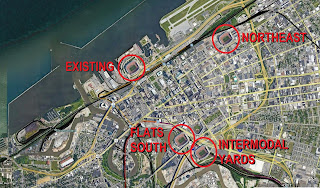 |
| Here are four of the potential stadium-oriented development sites being considered at this early stage. These can and likely will change as the process becomes more formalized (Google). |
Similar opportunities exist in Cleveland. But where? So far, these are the sites that apparently are being considered by the Haslams, according to sources close to them, for their stadium-oriented development built around a domed/retractable-roof facility:
1. Rebuild existing stadium with retractable roof — This would easily be the least expensive of the plans, costing in the hundreds of millions of dollars, but is also currently one of the least accessible. There are only two routes into the stadium — West Third Street and East Ninth Street.
Extending the downtown malls as a land bridge over the railroad tracks and Shoreway would help address that, along with incorporating a multimodal transportation center for trains, buses and light-rail connected to housing, hotels, offices and retail. The land bridge, with expanded convention facilities on a lower level and linked to the new stadium would create a massive, connected indoor complex for conventions, meetings and other special events.
2. Northeast side of downtown — This part of downtown, along St. Clair Avenue west of the Inner Belt, has much in common with what was the Central Market District of downtown in the 1970s and 1980s (today’s Gateway District). It is a place of low-rise buildings and parking lots that most people pass through between Interstate 90 and the central business district.
| Another view of the stadium-area development zone located in Minneapolis, with new office buildings at left for Wells Fargo and a planned 25-story apartment tower beyond (Ryan Cos.). |
The site has many advantages. It overlooks Lake Erie and with some access improvements, the site could become an attractive place for a stadium-oriented development zone. Improvement could include extending East 18th Street north to the Shoreway and extending the Waterfront Line light rail southward to create a more usable downtown loop.
But developing here would require acquiring dozens of small properties and demolishing lots of low-rise buildings, much like those in the Central Market-area properties that were sold to and demolished by the Greater Cleveland Domed Stadium Corp. in the 1980s. Those properties were later acquired by Gateway Economic Development Corp. of Greater Cleveland for the basketball arena and baseball stadium.
3. Intermodal Yards — Formerly the Norfolk Southern intermodal railroad yards, this vast area of vacant land was acquired by the Ohio Department of Transportation in 2011 prior to its reconstruction of the Inner Belt highway. It and most of the surrounding vacant land, suitable for development, remains publicly owned thereby reducing acquisition costs.
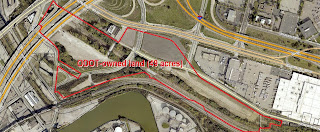 |
| The amount of publicly owned land on southeast side of the Inner Belt (I-90) highway is large. This was the runner-up site for the Cleveland Browns stadium in the 1990s (Google). |
This was actually the runner-up site for the new Cleveland Browns stadium in the late-1990s. But time was of the essence in bringing back the Browns and this site needed lots of infrastructure improvements (parking, transit, plus storm/water/sanitary sewers) prior to building a new stadium.
The site still needs those features, but it is easily the most accessible of the stadium sites being considered. It is accessible from Interstates 77 and 90 and a station on the existing Red, Blue and Green rapid transit lines could be built below the stadium. It would turn a dead zone above the Cuyahoga River into a year-round modern sports and entertainment complex.
4. Honorable Mentions — Two other sites were included in the list but one reportedly has already been rejected and the other is likely to be turned down, too. The already rejected site is the Weston Group-owned Superblock in the Warehouse District, bounded by West Sixth Street, West Third, Superior Avenue and St. Clair. The field would run parallel with West Third and Sixth. But the site is too constrained for an NFL stadium here.
The other site, Flats South, has more room but the topography is difficult. It would either require a lot of fill dirt or relocating the rapid transit lines just southeast of Tower City Center and closing Canal Road. But it would offer prime development sites along the river in an area where developer Joel Scheer has been trying to jump start his Flats South Innovation District.
Before someone decides to run out to start buying up land near any of these sites, realize first that the Haslams are VERY early on their search. There are no active proposals being tendered, nor even an architect hired at this time. But it is intriguing to see where their initial search may be leading them.
END

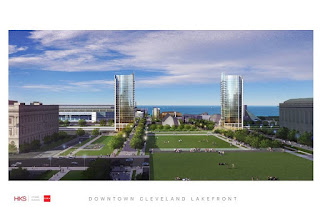
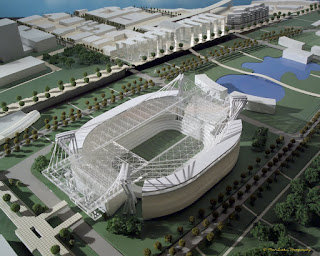
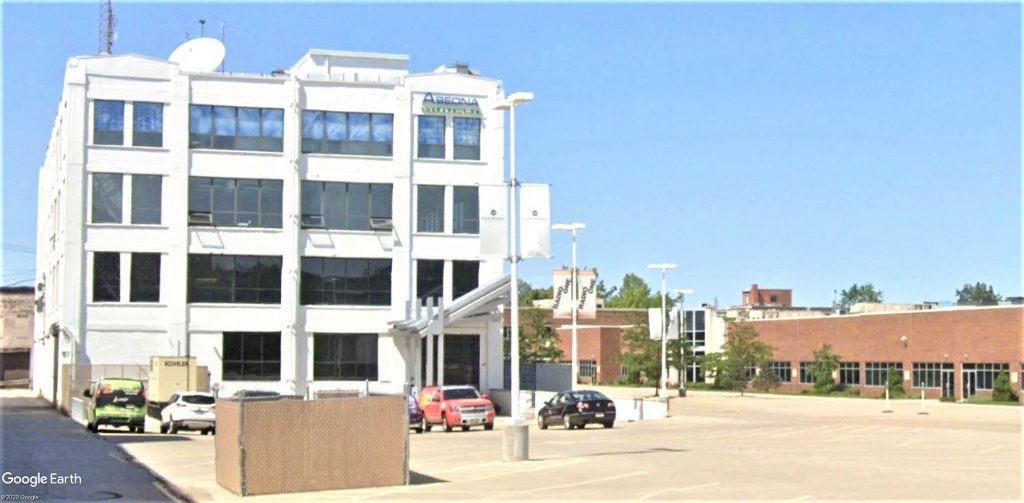
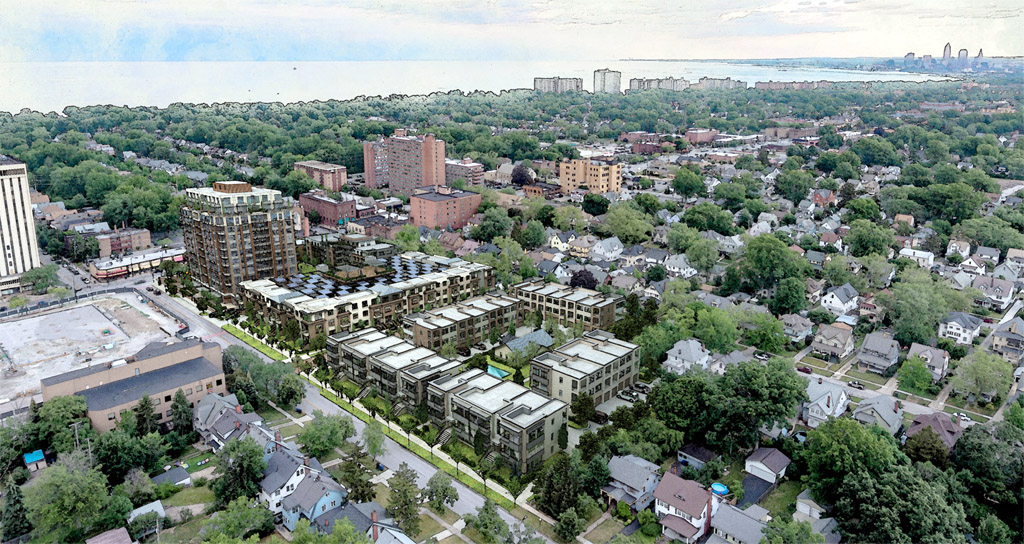

Comments are closed.